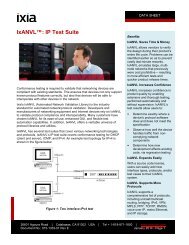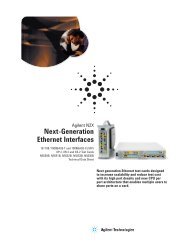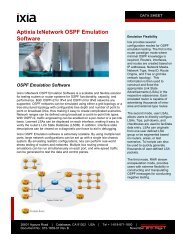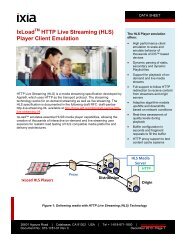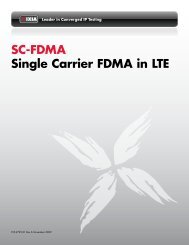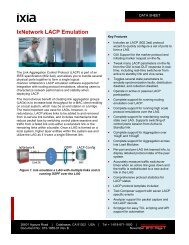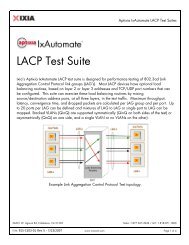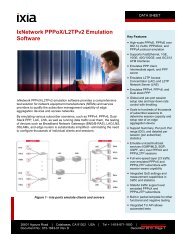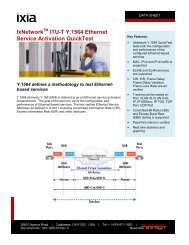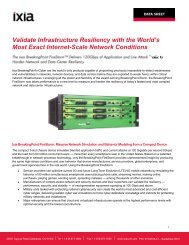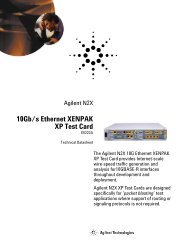Ixia Black Book: SDN/OpenFlow
Ixia Black Book: SDN/OpenFlow
Ixia Black Book: SDN/OpenFlow
You also want an ePaper? Increase the reach of your titles
YUMPU automatically turns print PDFs into web optimized ePapers that Google loves.
Introduction – Software Defined Networking<br />
Introduction – Software Defined Networking<br />
Most modern day network architectures rely on a traditional and conventional<br />
hierarchical organization, dependent on a tree-like structure of Ethernet switches and<br />
routers. Focusing solely on client-server computing, the network architectures fail to<br />
meet the needs of today’s computing trends. With the changes in traffic patterns for<br />
increased accessibility and connectivity, the rising prominence of both private and<br />
public cloud services, and the immense parallel server processing necessary for mega<br />
datasets, it is imperative that the demand for higher network capacity is fulfilled.<br />
By utilizing Software Defined Networking (<strong>SDN</strong>), it becomes possible to address these<br />
needs using a more dynamic and flexible networking architecture. <strong>SDN</strong> moves away<br />
from traditional architecture and to a revolutionary service delivery platform that can<br />
easily and readily address the changes in industry. With <strong>SDN</strong>, the control plane is<br />
accessed and modified using open protocols through software clients. By allowing third<br />
parties increased access to the control plane via software, <strong>SDN</strong> provides enterprises<br />
and carriers unparalleled programmability and network flexibility with rapid<br />
experimentation and optimization in order to address business needs.<br />
Current Networking Systems<br />
PN 915-2635-01 Rev A December 2012 1



